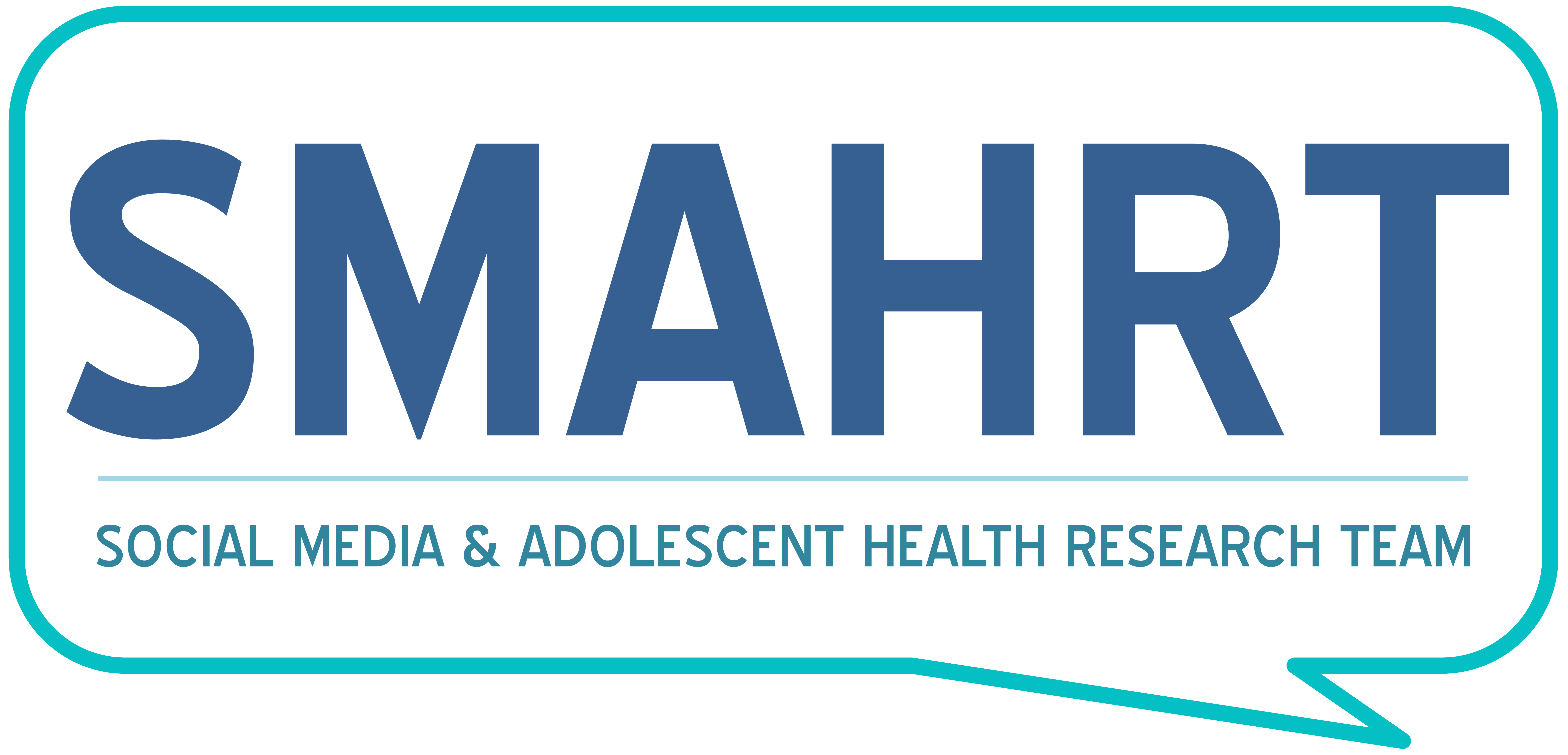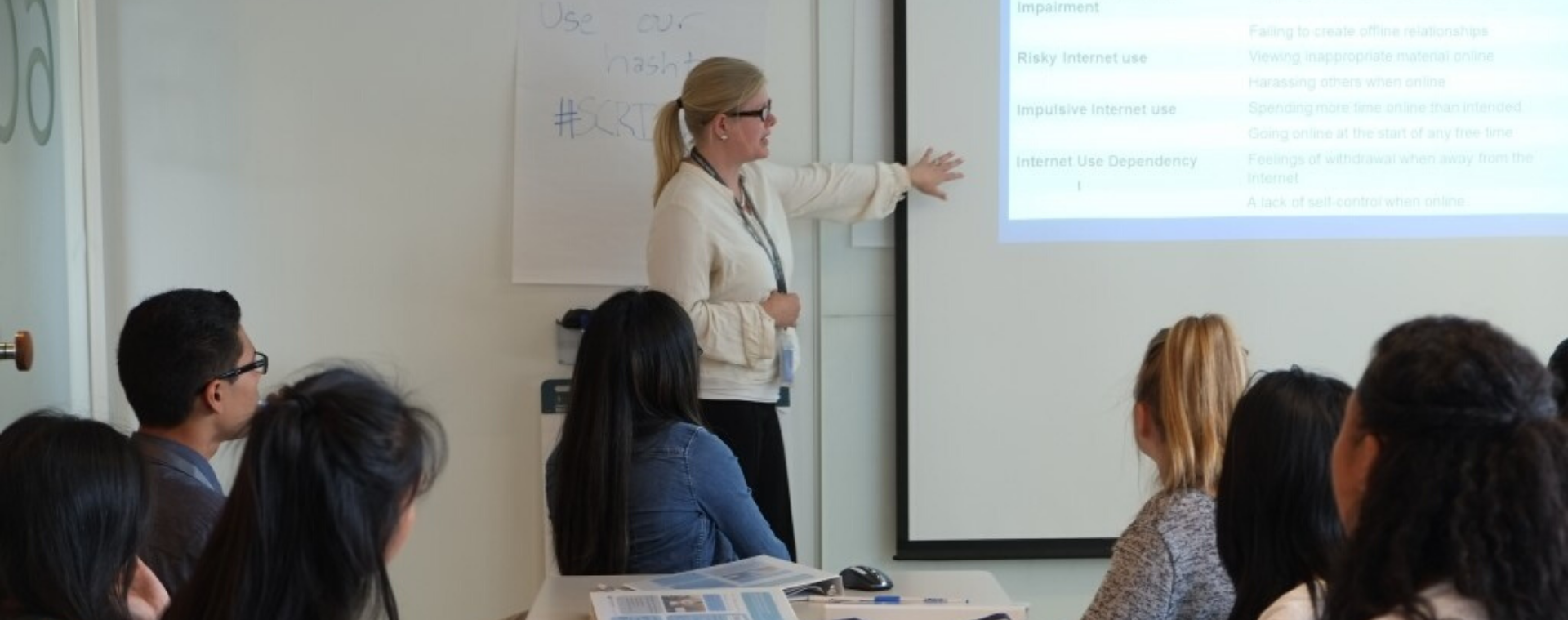
Holly Gerla is a woman who wears many hats. While Holly’s official title at Charles Wright Academy is Academic Technology Coordinator, she is—amongst other things—a technology teacher to lower, middle and high school students. SMAHRT had the pleasure of collaborating with Holly while conducting focus groups with students at Charles Wright Academy to gain a better understanding of young teens’ technology use. Holly’s experience as a technology teacher leads her to have unique insight into the impact social media is having on the mental health and behavior of adolescents. In her courses, she covers everything from technical skills to cyberbullying.

When Holly started teaching technology courses, she was surprised to learn just how open students were to discuss their experiences with technology when given the platform to do so.
“It takes time to really create a space where kids feel like it is safe to share what’s going on with them. Some of the things we talk about are uncomfortable, [such as] technology addiction, pornography or sexting. All those things that adults [typically] don’t want to talk about. But the students actually do, and they need a space to really talk about it. They have a lot of concerns,” Holly shares.

One of the opportunities for students to vocalize these concerns is in Holly’s ninth grade Digital Citizenship class. Digital Citizenship is defined by the acronym SCRAP, which stands for using technology safely, critically, responsibly, appropriately and productively.
However, Holly is sure to highlight not only rules surrounding technology, but the opportunities for learning and creativity it allows: “[the coursework] is not just a list of what you can’t do but what you can.”
Each year, her classes embark on a variety of innovative projects that integrate coursework of other classes such as math, history and English while strengthening technical skills. One such project includes the third grade’s longstanding Nisqually Watershed fieldtrips, in which the students use GoogleEarth to map locations over the course of the year. This results in a digital picture of what the watershed looks like, combined with photos from the trip, and the students’ writing from their science journals. Other unique projects in other grades include creating a documentary and a website.
Early in the year, classes are very skills-based, as student learn new platforms, web tools, and managing accounts online. Content creation picks up as the year moves on. Holly adds, “By the end of the year they are much more independent and self-directed, they know how the tools work.”

Holly is also cognizant of the layers of media usage. She covers a breadth of topics in Digital Citizenship including, but not limited to: privacy and security, technology and the law, copyright and fair use, and the physical, social and emotional impact of media. The Digital Citizenship class, in particular, is largely structured around discussion and opinion sharing. The most inspiring conversations she has had with students have centered on the ethics and responsibility one has for what they post online. Students even stop by her office to ask about challenges that arise for them regarding technology, such as copyright law, or how to handle online disagreements.
Holly works not only with students of varying ages but also in conjunction with the head librarian of the school to hold workshops that educate parents and the greater community. Holly emphasizes the importance of whole family involvement when it comes to guidelines regarding media usage. One thing she has learned is that parents sometimes don’t intervene until a problem arises, rather than setting guidelines and starting a dialogue early on. The parent workshops seek to provide tools for parents to help them on that path of establishing clear family guidelines.
“One of the surprises parents would find is that [their children] get why their parents have rules. They like them. They’re going to complain about them to your face, but they actually really appreciate knowing what the guidelines are. When the American Academy of Pediatrics came out with the Family Media Use Plan, I actually made it an assignment to go home and create a media plan with your family and to fill it out and discuss it together. I think it’s empowering when the rules don’t just apply to the kids, that [guidelines] are beneficial for everybody”
It is evident Holly’s role at Charles Wright is far and wide-reaching. Furthermore, it is clear that more schools could benefit from adopting the type of technology courses Holly teaches. She points to technology education’s many purposes, including job preparedness, as well as education on a more behavioral or social level. Lastly, Holly is ultimately hopeful about the potential technology holds for education. She points out that while adolescents are often savvy when it comes to online entertainment, technology education helps students to take those same devices to learn and empower themselves.
“Take those tools and use them for your own learning. That’s really where the future of education is. You can get any information you want at any time you want, most of it for free on the internet. If you’re passionate about something, if you’re interested in it, go figure it out. Harness the power of those tools to direct your own learning and education.”

SMAHRT is grateful to Holly and Charles Wright Academy and their collaboration with our research team. Thank you, Holly, for being an inspiration and an example for the benefits of technology education.
To learn more about Holly’s work, feel free to visit her class website.



